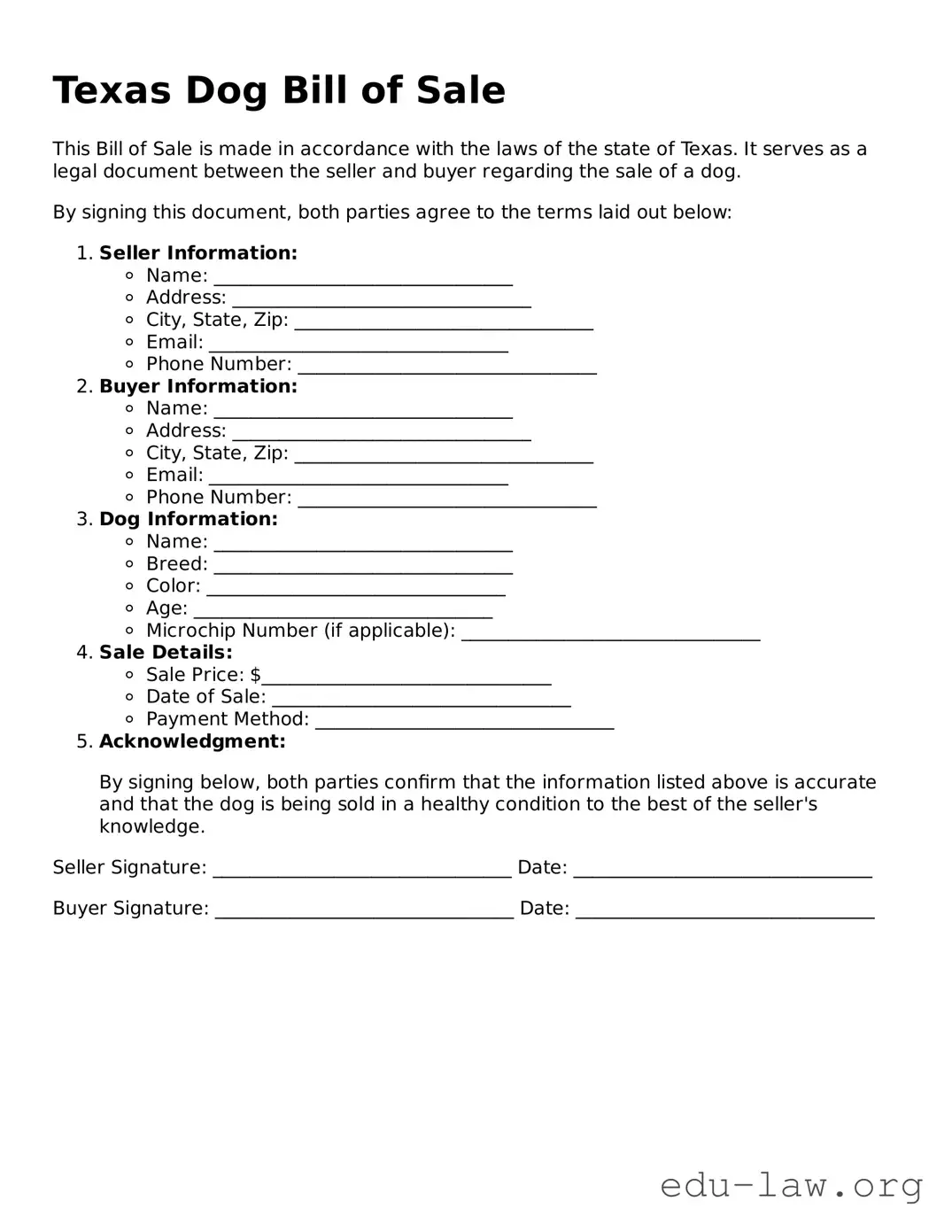What is a Texas Dog Bill of Sale?
A Texas Dog Bill of Sale is a legal document that records the sale and transfer of ownership of a dog from one party to another. It serves as proof of purchase and includes important details about the dog and the transaction.
Why do I need a Dog Bill of Sale?
Having a Dog Bill of Sale protects both the seller and the buyer. It provides record-keeping of the transaction, helps establish ownership, and may be useful for registration or insurance purposes. This document can also come in handy if there are any disputes regarding the sale in the future.
What information is included in the Texas Dog Bill of Sale?
The document typically includes the names and addresses of both the seller and buyer, a description of the dog (including breed, age, color, and identification details), the purchase price, and the date of the sale. Both parties should sign the document to acknowledge the transfer.
Is a Dog Bill of Sale mandatory in Texas?
While it is not legally required to have a Dog Bill of Sale in Texas, it is highly recommended for clarity and protection. A written record of the transaction can help avoid potential legal issues down the line.
Can I create my own Dog Bill of Sale?
Yes, you can draft your own Dog Bill of Sale. However, it is essential to ensure that it includes all necessary information to make it effective. Many templates are available online that you can use as a guide to create your document.
What if the dog has health issues?
If the dog has known health issues, it is important to disclose this information in the Dog Bill of Sale. Transparency is vital to maintain trust between the parties. You might also consider including a clause regarding any warranties or guarantees about the dog's health.
Do I need to have the form notarized?
Notarization is not required for a Dog Bill of Sale in Texas; however, having the document notarized might provide an extra layer of protection. It can help verify the identities of the parties involved and the authenticity of the signatures.
What if I lose my Dog Bill of Sale?
If you lose your Dog Bill of Sale, it can cause difficulties in proving ownership. It is a good idea to keep a copy in a safe place. If lost, try to recreate the details as best as you can and ask the other party to sign a new copy, if possible.
